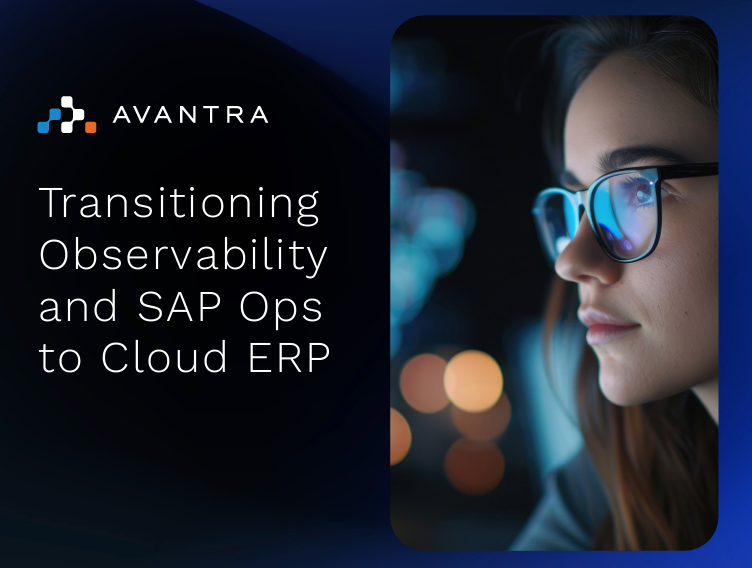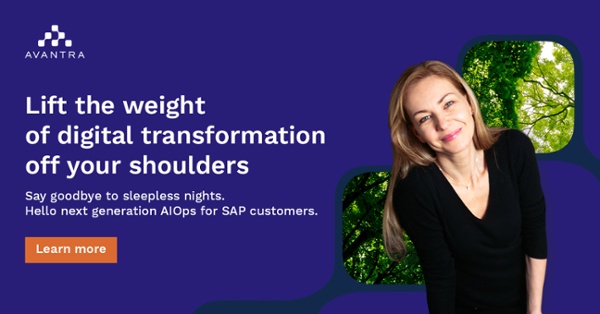3 min read
How to go beyond monitoring with ML based predictive analytics
By: Heiko Mannherz on Nov 24, 2021 11:00:00 AM

As the only AIOps platform for automating SAP operations, Avantra performs the daily tasks that steal time from your Basis teams. In this article we highlight how the Avantra Enterprise Edition helps your SAP experts to anticipate potential issues, not merely react to them. It’s the next step that goes beyond monitoring.
IT operations thresholds
At Avantra, we always aim to provide answers that are no more complex than the problem we are trying to solve. In the traditional world of monitoring - the core of every IT operations activity - your operations team has defined ‘thresholds’ for when a system or service enters a critical condition. With Avantra’s next generation AIOps platform, they can perform this task in a single step for thousands of systems and define different policies for day versus night. Thresholds are great because they are easy to understand. They are basically whatever you’ve defined in your Service Level Agreement (SLA). A single number that separates good from not so good.
But thresholds are terribly bad in dealing with ‘spikey’ or ‘bursty’ situations. Whenever IT operations teams define thresholds, they think in terms of “it’s getting bad”, “it stays bad”, or “it gets worse”. That’s what they care about. When they need to react, they want to be made aware of. In reality, what often happens is it gets bad for a while, but it’s good in the long term. We have seen many cases where the period of ‘badness’ is shorter than it takes to get the poor person on call out of the bed in the middle of the night!
And this is exactly the kind of situation you want to avoid. It is not only a waste of time, it impacts people's wellbeing. And you most likely need all your SAP experts on deck - and in good health - to drive innovation.
How to use artificial intelligence to empower human intelligence
Many other applications in the market, in particular the ones with a performance management background, will try to answer this problem with what’s called ‘anomaly detection’. Behind this is the approach to transfer the question “When is a system or service in a bad condition?” into a statistical problem. If you have enough data, and Machine Learning (ML) is of help here, you can identify values of some statistical significance and call these an anomaly. No thresholds involved whatsoever. Everything happens automatically.
Except that your SAP operations people are no longer in control. Humans don’t have a natural or intuitive understanding of statistics. Once the system says “this is an anomaly” for the third time, and it doesn’t match your operations team’s perception of the situation, they simply won’t trust it. It’s frustrating to deal with what’s essentially a black box.
Obviously, this isn’t a viable option for us or for your teams. At Avantra, we aim to empower people, to combine human with artificial intelligence. Your operations team has to stay in control. Earlier I said that thresholds are great because they are understandable. So, we tried to retain the benefits of thresholds while overcoming their drawbacks.
Next generation AIOps for SAP
Instead of only considering the condition of a system or service at a single point in time, we predict how this condition will evolve over time. The Avantra Enterprise platform uses machine learning algorithms to permanently determine a future trend. And when thresholds are evaluated, this future trend is taken into account. Broadly speaking, if the platform predicts the situation is getting worse, it will raise an early warning. If the prediction indicates it is getting better, it will defer the alert until the next time it evaluates the thresholds again. Using this simple principle allows you and your teams to deal with spikes, but also to avoid ‘flapping’ monitoring results, because the system’s condition hovers around a threshold. In both scenarios, your operations team will only be alerted if there is a critical condition that doesn’t want to go away. And still, the team is in control of the thresholds as before.
You may ask; “What’s the big deal? Everyone does ML these days.” Yes, and the notion of machine learning is exactly where you should have raised your eyebrows. The Avantra AIOps platform is an on premise platform. Of course, we have cloud offerings available but almost all our customers run the platform in an on premise fashion. It’s also a shared application with agents running business logic on all your systems which host SAP applications. Even more, we are committed to a very small application footprint. That means Avantra only collects the amount of data it needs and aggregates frequently to save space. Avantra cannot and will not connect to your SAP systems every 30 seconds to retrieve signals. And we’ll never ask our customers to install the largest hardware they can afford to run standard machine learning models in a resource hungry environment. Instead, our engineering team spent a tremendous amount of time finding the minimum amount of data required to make reasonable predictions. In our latest product release, we have implemented the model and optimization algorithms that are the most efficient for the job.
Avantra stores and transfers data efficiently without impacting your system performance. In short, Avantra brings you memory and CPU conscious machine learning for a shared on premise environment.
We call it predictive analytics. It’s another small step to reduce the burden of running SAP and to reignite innovation across all IT Operations.
If you would like to learn more about Avantra Enterprise, please schedule time for an overview.
Related Posts
Meet the team: Bernd Engist
Next up in our Meet the team blog series, we feature our Chief Customer Officer, Bernd Engist....
Unlocking the power of private AI for your SAP landscape: Avantra AIR
Avantra is excited to unveil Avantra AIR, an AI driven extension of the Avantra platform that...
Meet the team: Peter Asigbetse
Next up in our Meet the team blog series, we feature one of our Principal Consultants for SAP,...





